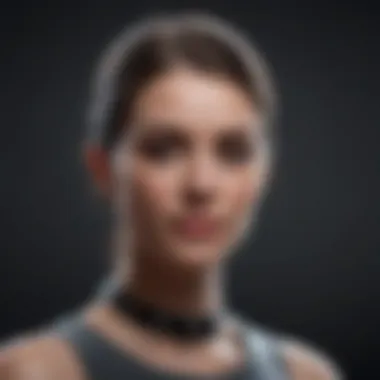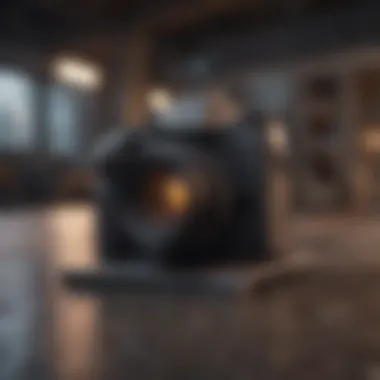Master the Art of Adding a Photo onto Another Photo with This Tutorial


Product Overview
When delving into the realm of incorporating one photo onto another within the digital sphere, one must exhibit not only technical prowess but also a creative vision. This brief provides an insightful and detailed look into the intricate process of seamlessly merging two visual elements to craft captivating compositions. From selecting the appropriate tools to the intricate art of blending images harmoniously, this tutorial serves as a guiding light for those aiming to enhance their digital artistry.
Introduction
In the realm of digital artistry, the process of adding a photo onto another photo holds significant importance. It is a technique that opens up endless creative possibilities for both professionals and enthusiasts alike. By seamlessly blending images together, one can create visually striking compositions that captivate viewers. This article serves as a comprehensive guide, shedding light on the nuances of this art form, from tool selection to final touches.
Understanding the Concept
Definition of Photo Overlay
Photo overlay is a method where one image is superimposed on top of another, allowing for a unique combination of elements. This technique contributes greatly to the overall topic of adding photos onto each other by enabling the creation of layered compositions. Its key characteristic lies in its ability to merge distinct visual elements harmoniously, adding depth and complexity to an image. Photo overlay is a popular choice within digital artistry due to its versatility in storytelling and visual impact. While its advantages include enhancing creativity and composition, a potential disadvantage could be overcomplicating the visual narrative.
Importance of Adding Photos Onto Each Other
The importance of adding photos onto each other cannot be understated in the realm of digital design. It plays a crucial role in visual storytelling, allowing artists to convey complex narratives through imagery. By seamlessly integrating multiple photos, artists can evoke emotions and convey messages effectively. The key characteristic of this process is its ability to enhance the overall impact of an image by layering visual content. It is a popular choice for professionals looking to elevate their artistic creations. One unique feature is its potential to create a cohesive visual language within a composition. However, one must be cautious of overcomplicating the design, which could detract from the intended message.
Tools and Software
Photoshop
Photoshop stands out as a powerhouse tool in the world of digital editing. Its robust features and capabilities contribute significantly to the process of adding photos onto each other. The key characteristic of Photoshop lies in its advanced layering abilities and precise editing tools, making it a popular choice among professionals. One unique feature is its seamless integration with other Adobe products, enhancing workflow efficiency. While Photoshop offers unparalleled creative control, its complexity may pose a challenge for beginners.
GIMP
GIMP, an open-source alternative to Photoshop, offers a wealth of tools for digital editing. Its key characteristic includes a customizable interface and extensive plugin support, making it a versatile choice for artists. One unique feature of GIMP is its accessibility, as it is free to use, democratizing digital artistry. However, GIMP may lack some advanced features found in commercial software, which could limit certain editing capabilities.
Online Tools
Online tools provide a convenient alternative for those without access to professional software. Their key characteristic is accessibility, as they can be used directly from a web browser. These tools are popular for their ease of use and quick editing options, making them ideal for beginners or quick edits on the go. One unique feature of online tools is their collaborative nature, allowing multiple users to work on the same project simultaneously. However, online tools may have limitations in terms of advanced editing functions.
Preparation Steps


Selecting Images for Composition
The process of selecting images for composition is a crucial first step in adding photos onto each other. It involves carefully curating visuals that complement each other in theme, color, and tone. The key characteristic of this step is its impact on the final composition, as the chosen images dictate the overall aesthetic. Selecting images thoughtfully is a popular choice among artists seeking to convey a coherent message through their compositions. One unique feature is the ability to evoke specific emotions or narratives through strategic image selection. However, the disadvantage of this step may lie in the time and effort required to find the perfect combination of images.
Choosing the Right Image Formats
Choosing the right image formats is essential for seamless integration when adding photos onto each other. It ensures compatibility and maintains the quality of the final composition. The key characteristic of this step is its impact on the editing process, as different formats may have varying levels of detail and clarity. Opting for appropriate image formats is a popular choice among professionals aiming for high-quality results. One unique feature is the ability to work across various platforms without compromising image integrity. However, the disadvantage could be the file size limitations or loss of quality during format conversion.
Step-by-Step Guide
In this article, the Step-by-Step Guide section is pivotal as it delves into the intricate process of adding a photo onto another photo. By meticulously outlining each step, readers are equipped with a comprehensive understanding of the tasks at hand. This section ensures that readers grasp the fundamental concepts required to execute the photo overlay effectively. From image selection to final enhancements, the Step-by-Step Guide acts as a roadmap for creating visually stunning compositions.
Image Selection
High-Quality Images
High-Quality Images play a crucial role in the overall success of adding a photo onto another photo. The crisp detail and resolution of high-quality images contribute significantly to the final composition's visual appeal. These images offer clarity and depth, ensuring that the blended result appears seamless and professional. Utilizing high-quality images in this context provides a solid foundation for a flawless overlay, as every intricate detail is preserved with precision.
Complementary Colors and Themes
Complementary Colors and Themes add another layer of complexity and creativity to the image selection process. By harmonizing colors and themes between the base photo and the overlay, a cohesive and visually appealing composition can be achieved. Incorporating colors that complement each other enhances the overall impact of the final image, creating a captivating visual experience for the viewer. Choosing complementary colors and themes strategically enhances the artistic value of the photo overlay.
Layering Process
Creating Layers in Editing Software
The process of creating layers in editing software is fundamental to the photo overlay technique. By separating elements into layers, users can manipulate each part of the composition independently, allowing for precise adjustments and edits. This method offers flexibility and control over the overlay elements, facilitating a seamless integration of the photos. Creating layers in editing software streamlines the editing process, enabling users to work efficiently and with enhanced precision.
Adjusting Opacity and Blend Modes
Adjusting Opacity and Blend Modes is a sophisticated technique that fine-tunes the interaction between overlaid photos. By modifying the opacity, users can control the transparency of each layer, creating subtle or dramatic effects as desired. Blend modes offer a range of choices to merge the photos seamlessly, from vivid contrasts to subtle color harmonies. Mastering opacity and blend modes is key to achieving a flawless and visually captivating photo overlay.
Alignment and Scaling


Ensuring Proper Alignment
Ensuring Proper Alignment is crucial to the success of a photo overlay, as any misalignment can disrupt the overall composition. By carefully aligning the elements of the base photo and overlay, users maintain coherence and visual harmony within the final image. Proper alignment ensures that the overlay appears natural and integrated, enhancing the overall aesthetic quality of the composition.
Resizing and Transforming Images
Resizing and Transforming Images allows users to adjust the size and orientation of the overlay to fit seamlessly within the base photo. By resizing and transforming the overlay, users can correct any discrepancies in scale and perspective, ensuring a cohesive and organic blend between the two images. This process maximizes the visual impact of the overlay, creating a polished and professional composition.
Blending Techniques
Feathering Edges
Feathering Edges is a technique that softens the transition between the overlaid photos, creating a natural and gradual blend. By feathering the edges, users eliminate harsh lines and edges, resulting in a seamless and realistic integration of the photos. This technique enhances the continuity of the composition, ensuring that the overlay appears nuanced and professionally executed.
Utilizing Masks
Utilizing Masks offers a refined method of blending photos by selectively revealing or concealing portions of the overlay. Masks provide users with precise control over which areas of the overlay are visible, allowing for intricate and detailed adjustments. By leveraging masks, users can achieve a seamless and well-integrated photo overlay, enhancing the overall quality and refinement of the composition.
Enhancements and Final Touches
In this section of the article focusing on enhancements and final touches, we delve into the critical aspects that elevate the composition of photos onto each other. Enhancements play a crucial role in refining the visual appeal of the combined images, ensuring a seamless and professional finish. By paying attention to details such as color adjustments, text overlays, and graphic elements, one can transform a basic photo overlay into a visually striking masterpiece. These final touches not only enhance the aesthetics but also communicate a specific message or evoke a certain mood, adding depth and complexity to the composition.
Color Adjustments
Color Correction and Matching
Color correction and matching are fundamental processes in the realm of photo editing, especially when combining different images into a single composition. The ability to harmonize colors across multiple photos ensures coherence and a unified aesthetic. By adjusting hues, saturation, and brightness levels, one can achieve visual consistency and eliminate any discrepancies that may arise from using photographs taken under varying lighting conditions. Color correction enhances the overall look of the composition, making it more appealing to the viewer's eye.
Adding Filters and Effects
Adding filters and effects is another powerful tool for enhancing the visual impact of a photo overlay. Filters can dramatically alter the mood and tone of an image, creating a specific ambiance or highlighting certain elements. Effects such as blurs, vignettes, or color tints can add a creative touch to the composition, elevating it from a basic overlay to a work of art. By experimenting with different filters and effects, one can add depth and texture to the images, making them more engaging and captivating for the audience.
Text and Graphic Elements


Incorporating Text Overlays
Text overlays are instrumental in conveying a message or information within a photo composition. Whether adding a caption, title, or decorative text, incorporating textual elements can enhance the storytelling aspect of the images. Text overlays can also serve a practical purpose, such as watermarking or branding the final composition. By choosing appropriate fonts, sizes, and placements, one can effectively integrate text into the visual narrative, guiding the viewer's interpretation and creating a cohesive design.
Integrating Icons or Logos
Integrating icons or logos adds a professional touch to the photo overlay, aligning it with branding guidelines or establishing a visual identity. Icons or logos can reinforce brand recognition, add credibility to the composition, or provide additional context to the images. By strategically placing icons or logos within the design, one can create a seamless integration between the individual images and the overall theme, enhancing brand visibility and aesthetic appeal.
Exporting the Composition
Optimizing for Different Platforms
Optimizing the composition for different platforms is essential to ensure the best possible viewing experience across various devices and screen sizes. By considering factors such as image resolution, file size, and compression techniques, one can tailor the composition to meet the requirements of specific platforms, including social media, websites, or printing purposes. Optimizing the composition maximizes its impact and accessibility, allowing it to be appreciated by a wider audience without compromising on visual quality.
Saving in Various Formats
Saving the composition in various formats provides flexibility and compatibility for different usage scenarios. By saving the final composition in formats such as JPEG, PNG, or PSD, one can maintain the image quality while accommodating specific requirements for printing, web display, or further editing. Each format has its advantages and limitations in terms of file size, transparency, and editing capabilities, so choosing the right format ensures the long-term usability and versatility of the photo overlay composition.
Conclusion
In this detailed tutorial on how to add a photo onto another photo, we have delved deep into the intricate process of merging images seamlessly to create visually stunning compositions. Understanding the importance of this technique is crucial, whether for professional projects or personal creativity. By mastering the art of overlaying photos, individuals open up a plethora of creative possibilities in the realm of digital artistry. Not only does it allow for the exploration of innovative visual concepts, but it also presents a platform for experimenting with different styles and themes.
Exploring Creative Possibilities
Personal Projects
Exploring personal projects in the context of merging photos offers a unique avenue for self-expression and creativity. Diving into personal projects provides individuals with the freedom to blend images based on their artistic vision and narrative. The key characteristic of personal projects lies in the ability to reflect one's personal style and storytelling through photo overlays. This mode of creative expression is quite beneficial for individuals looking to hone their skills and develop a signature aesthetic. However, the disadvantage of focusing solely on personal projects is the limitation in terms of exposure and feedback from a wider audience.
Professional Applications
On the other hand, professional applications of merging photos cater to a different realm of creativity and purpose. Utilizing photo overlays for professional projects entails a more strategic approach, aimed at conveying specific messages or aligning with branding guidelines. The key characteristic here is the ability to meet client briefs and deliver impactful visual content that resonates with target audiences. Professional applications are a popular choice in this article due to their potential for commercial success and broad reach. However, the challenge lies in maintaining originality and creativity within the constraints of client requirements and project objectives.
Continuous Learning and Experimentation
Pushing the Boundaries of Design
Pushing the boundaries of design through photo overlay involves challenging conventional norms and exploring new techniques to create visually compelling compositions. The key characteristic of this aspect is the drive to innovate and experiment with unconventional approaches to image blending. This penchant for innovation is highly beneficial for pushing the limits of creativity and setting new standards in digital artistry. Despite its advantages in fostering originality and creative growth, the downside of pushing design boundaries can be the risk of veering too far from audience expectations or industry standards.
Seeking Inspiration for Future Projects
Seeking inspiration for future projects is a valuable endeavor in the realm of merging photos. By actively seeking out inspiration from various sources such as art movements, nature, or even everyday objects, individuals can infuse fresh ideas into their compositions. The key characteristic of seeking inspiration lies in the ability to stay creatively motivated and constantly evolve one's artistic vision. This proactive approach is advantageous for keeping creativity flowing and avoiding stagnation in the design process. However, the challenge of seeking inspiration is the fine balance between drawing influences and maintaining originality in one's work.



